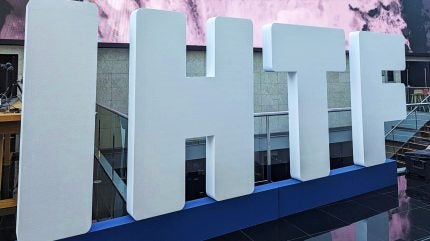
Hotels must employ a mix of at least seven different platforms in their marketing strategies to impact sales, according to Chris Bowling, head of digital marketing and e-commerce at Best Western Hotels (BWH) GB.
Speaking at Arena’s International Hotel Technology Forum (IHTF) in Barcelona, Bowling pointed to the variety of workplaces and -styles that emerged post-pandemic, adding that, as customers’ lifestyles change, so must hotels’ marketing strategies.

Discover B2B Marketing That Performs
Combine business intelligence and editorial excellence to reach engaged professionals across 36 leading media platforms.
Bowling commented: “The world has changed a lot in the last decade,” comparing the office commuter to the home worker. He suggested that the former might listen to podcasts during their commute, while the latter might opt to scroll through social media before starting their workday.
“You can’t just focus on any one of these channels,” said Bowling. “The science has shown that you need to be on at least seven different touch points to be able to impact a sale.”
Yet different media offers different levels of effectiveness. TV has the highest average increase in marketing effectiveness at 29% but is also the most expensive, according to marketing experts Les Binet and Peter Field. It is followed by outdoor, at 20%, radio at 17% and press at 15%.
However, Bowling notes that brands need to find the right specific mix for themselves.

US Tariffs are shifting - will you react or anticipate?
Don’t let policy changes catch you off guard. Stay proactive with real-time data and expert analysis.
By GlobalData“You need to work out what’s best for your company,” he said, offering BWH’s own approach as an example. In 2022, the company focused primarily on TV, putting most of its money in one “pot”. This year, though, the company opted for a more varied approach, looking to “hit people from multiple angles”. It shifted its focus to outdoor and radio supported by online marketing, which Bowling characterised as: “A really nice combination of seeing the visuals but hearing the message.”
He continued: “We need multiple ad exposures to make an impact. One to two might get someone to pay attention, three to 10 ad exposures might change the perception of your brand, but 10 plus is when someone will actually take an action – that’s when someone might go to your website and might make a booking.”
While Bowling acknowledged that finding the right mix of marketing platforms isn’t necessarily straightforward, he noted that artificial intelligence and machine learning may find a place here within the hotel marketing sector.
BWH is already using Meta’s Robyn to analyse its marketing data, inputting data on different marketing channels, the cost, reach, frequency and clicks. Analysing the data, the model is able to calculate return on investment, offering insights on which channels are proving most effective. Over time, this data will inform the company’s choice of platforms in its mixed marketing strategy.
“It’s tricky to implement and there you’re probably going to need a data scientist to help work on this,” warned Bowling, but he added of its value: “If the likes of Meta and Google are getting involved through their Robyn and Meridian models, it’s a trend that’s here to stay. It’s going to be for a long time.”





